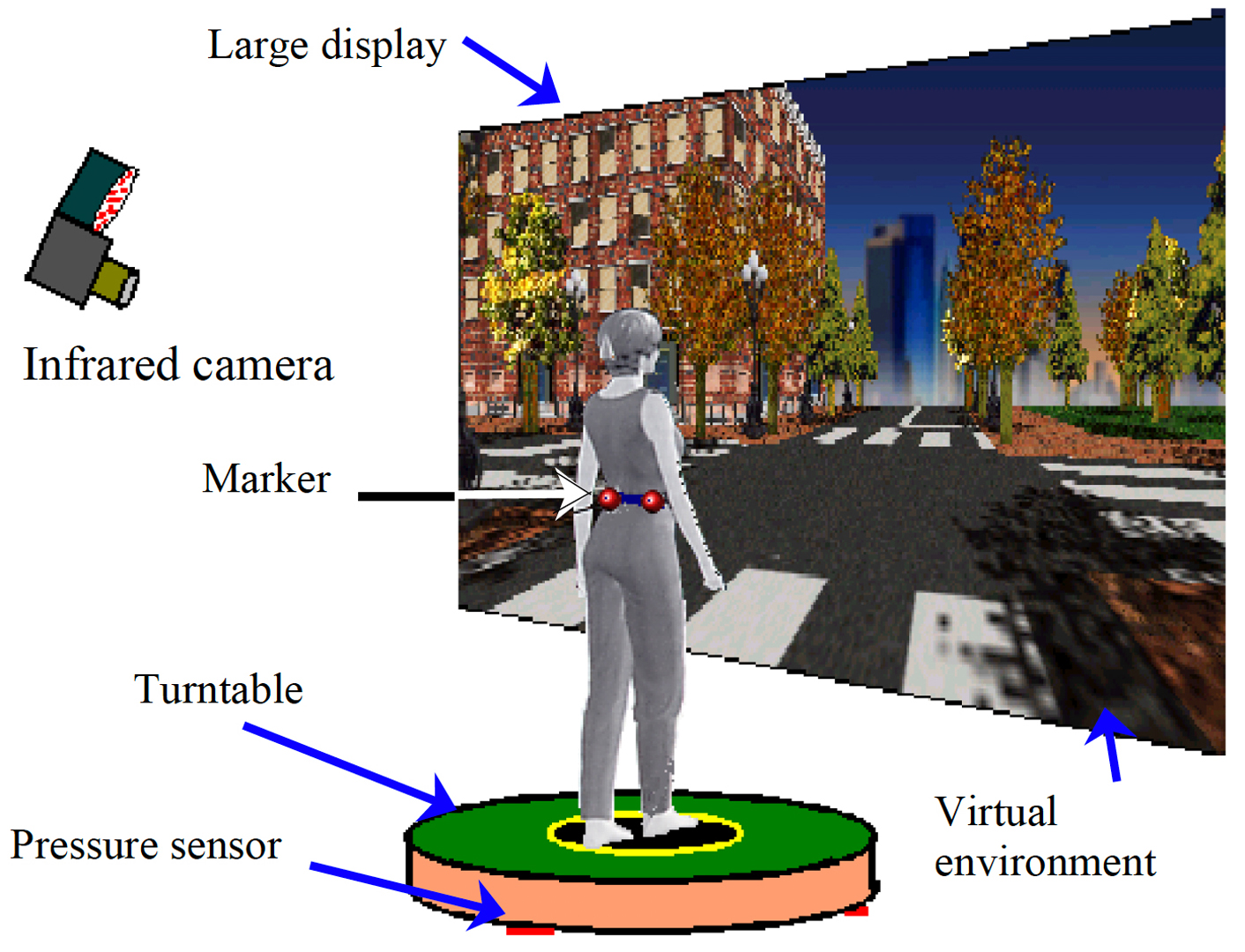“A New Step-in-Place Locomotion Interface for Virtual Environment With Large Display System” by Bouguila, Sato, Hasegawa, Naoki, Matsumoto, et al. …
Notice: Pod Template PHP code has been deprecated, please use WP Templates instead of embedding PHP. has been deprecated since Pods version 2.3 with no alternative available. in /data/siggraph/websites/history/wp-content/plugins/pods/includes/general.php on line 518
Conference:
- SIGGRAPH 2002
-
More from SIGGRAPH 2002:
Notice: Array to string conversion in /data/siggraph/websites/history/wp-content/plugins/siggraph-archive-plugin/src/next_previous/source.php on line 345

Notice: Array to string conversion in /data/siggraph/websites/history/wp-content/plugins/siggraph-archive-plugin/src/next_previous/source.php on line 345

Type(s):
E-Tech Type(s):
- Interfaces & HCI
Entry Number: 63
Title:
- A New Step-in-Place Locomotion Interface for Virtual Environment With Large Display System
Presenter(s):
Description:
Abstract
The project presents a new locomotion interface for virtual environment with large display system. Users will be able to direct and control the traveling in the VE by in-place stepping and turning actions. Using a turntable technology, Visual feedback is continuously provided though the use of screen of limited size.
1. Introduction
Walking or traveling in general is an important life enhancing activity. It is initiated and sustained by the lower part of human body and considered as a necessary daily behavior that human performs to get from place to place. Keeping the same mean of active and dynamic ability to move through large-scale virtual environment (VE) will be of great interest for many applications demanding locomotion, such as building evaluation, urban planning, terrain exploration, and military and vocational training. In the present study we present a new virtual locomotion system that can provide users with the ability to walk through large-scale VE in an active “life-like” manner.
2. System Overview
The developed system as illustrated in figure 1, is composed of three main parts: a walking platform, sensing system, and large display system. The interface employs a turntable as walking platform on top of which users will stand and interact with the virtual environment that being projected on the large screen. Initially users will stand at the center of the turntable and face the center of the large screen. Users can engage into a virtual walking experience by stepping in place without propelling their body. Step-in-place movement, which is detected by a set of sensors embedded in the turntable, is treated as a gesture of moving forward in the VE. To change the moving direction or to explore the surrounding environment in general, users are required to turn their body about its vertical axis while remaining at the same position, the same natural turning action they perform in real life. The turn-in-place action is treated as a gesture changing the direction of the viewpoint. However, as large screen provides a limited projection area, a large turning action will put the displayed image outside users’ visual field of view. To overcome such limitation and keep users continuously oriented toward the screen and provided with enough visual display, the turntable platform will smoothly and passively rotate in the opposite direction of users turning. The passive compensation of users’ active turning will continue until users regain their initial orientation.
3. Conclusion and Future Work
Locomotion is initiated and sustained by the lower part of the body as in real life. Virtual displacement is achieved by step-in-place and side-step actions, whereas a natural rotation about the vertical axis of the body controls virtual turning. Such physical based and lifelike actions allow users to keep their natural reflexes and navigational skills to move around VE. The three distinguishing advantages of such technique are: 1) the use of turntable technique as walking platform to cancel turning rather than displacement 2) allow virtual surrounding projection with a single large screen. Users can make full turns in the VE without loosing sight of the projected image. 3) Finally, The system demands no wired attachment to the user’s body.
Farther study are necessary to evaluate the effect of turntable system on users’ spatial perception and way finding capability.






